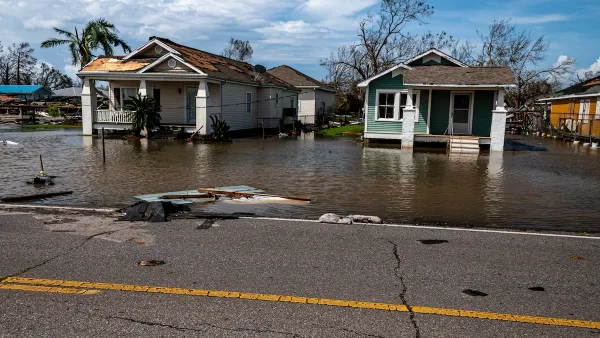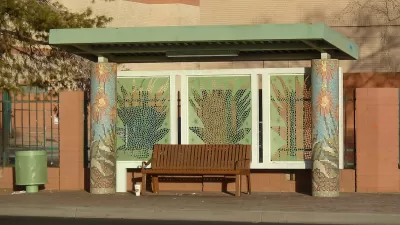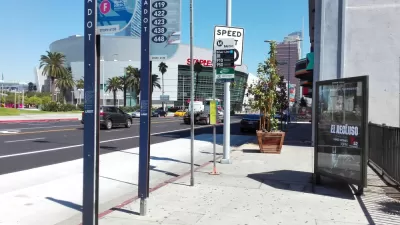When heat and humidity are high, people are more likely to opt for cars when possible.

New research from MIT finds that, unsurprisingly, high heat and humidity encourage people to choose to drive for trips that they would otherwise make by foot or transit.
As Christian MilNeil explains in Streetsblog Mass, the researchers calculated the influence of the “Universal Thermal Climate Index” (UTCI) incorporates wind speeds and radiant temperatures (“which vary according the amount of shade and heat-absorbing materials, like hot asphalt”) into the traditional heat index measurement, which combines heat and humidity.
This index is more accurate to how people make choices about their travel based on perceived discomfort. As one researcher explained, “What that means is, if I am walking along a street, and there’s a 1 degree increase in perceived temperature, that block is going to feel like a longer walk, 81 meters longer, because it's hotter.”
The results have implications for policymakers and planners who want to encourage people to walk and use transit. Shade, cooling pavement, and other infrastructure interventions can increase the distance that people are willing to walk and make cities safer and more comfortable.
FULL STORY: MIT Research Finds Increasing Heat Makes Cities Measurably Less Walkable

Planetizen Federal Action Tracker
A weekly monitor of how Trump’s orders and actions are impacting planners and planning in America.

Vehicle-related Deaths Drop 29% in Richmond, VA
The seventh year of the city's Vision Zero strategy also cut the number of people killed in alcohol-related crashes by half.

As Trump Phases Out FEMA, Is It Time to Flee the Floodplains?
With less federal funding available for disaster relief efforts, the need to relocate at-risk communities is more urgent than ever.

A Case for Universal Rental Assistance
A pair of researchers argues that expanding rental assistance programs for low-income households is the most effective way to alleviate the housing crisis.

Office Conversions Have Increased Every Year This Decade
Since the pandemic, office vacancy rates remain high, leading many cities to adjust zoning codes to accommodate adaptive reuse.

Index Measures Impact of Heat on Pedestrian Activity
When heat and humidity are high, people are more likely to opt for cars when possible.
Urban Design for Planners 1: Software Tools
This six-course series explores essential urban design concepts using open source software and equips planners with the tools they need to participate fully in the urban design process.
Planning for Universal Design
Learn the tools for implementing Universal Design in planning regulations.
JM Goldson LLC
Custer County Colorado
Sarasota County Government
City of Camden Redevelopment Agency
City of Astoria
Transportation Research & Education Center (TREC) at Portland State University
Camden Redevelopment Agency
City of Claremont
Municipality of Princeton (NJ)





























